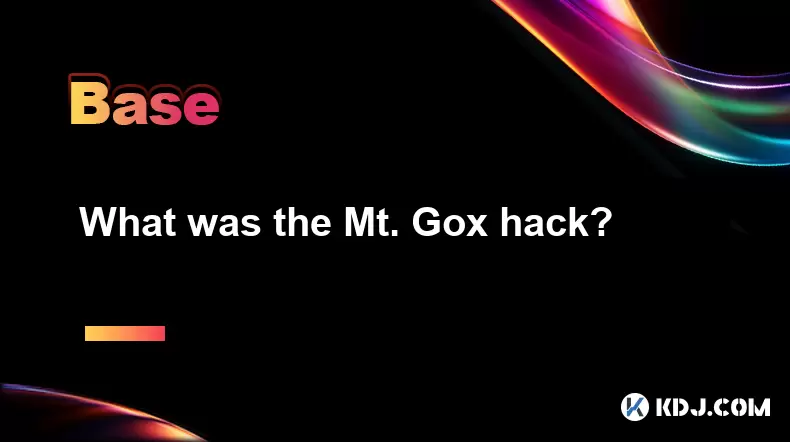-
 Bitcoin
Bitcoin $117400
0.05% -
 Ethereum
Ethereum $3767
0.13% -
 XRP
XRP $3.554
2.85% -
 Tether USDt
Tether USDt $1.000
0.01% -
 BNB
BNB $766.5
1.11% -
 Solana
Solana $196.6
8.51% -
 USDC
USDC $0.0000
0.01% -
 Dogecoin
Dogecoin $0.2716
-0.23% -
 Cardano
Cardano $0.8901
3.81% -
 TRON
TRON $0.3144
0.09% -
 Hyperliquid
Hyperliquid $44.52
-3.11% -
 Stellar
Stellar $0.4735
2.59% -
 Sui
Sui $3.978
2.18% -
 Chainlink
Chainlink $19.59
1.45% -
 Hedera
Hedera $0.2715
0.05% -
 Avalanche
Avalanche $25.48
1.87% -
 Bitcoin Cash
Bitcoin Cash $523.6
-4.49% -
 Shiba Inu
Shiba Inu $0.00001551
0.09% -
 Litecoin
Litecoin $115.9
-0.92% -
 UNUS SED LEO
UNUS SED LEO $8.992
0.06% -
 Toncoin
Toncoin $3.336
2.13% -
 Polkadot
Polkadot $4.510
0.70% -
 Uniswap
Uniswap $10.91
2.37% -
 Ethena USDe
Ethena USDe $1.001
0.02% -
 Pepe
Pepe $0.00001421
1.31% -
 Monero
Monero $320.2
-1.73% -
 Bitget Token
Bitget Token $4.950
0.14% -
 Dai
Dai $0.0000
-0.02% -
 Aave
Aave $323.3
0.00% -
 Bittensor
Bittensor $447.5
8.38%
What was the Mt. Gox hack?
The Mt. Gox hack, which resulted in the loss of 850,000 Bitcoins in 2014, exposed critical security flaws and operational negligence, shaking trust in early cryptocurrency exchanges.
Jul 22, 2025 at 01:22 am

Understanding the Mt. Gox Hack
The Mt. Gox hack refers to the collapse of Mt. Gox, once the largest Bitcoin exchange in the world, which led to the loss of 850,000 Bitcoins in 2014. This event sent shockwaves through the cryptocurrency community and remains one of the most significant incidents in the history of digital currencies. Mt. Gox was based in Tokyo, Japan, and handled over 70% of all Bitcoin transactions globally before its downfall.
Origins of Mt. Gox
Originally, Mt. Gox was not a cryptocurrency exchange. It started as a platform for trading Magic: The Gathering cards, with the acronym standing for Magic: The Gathering Online Exchange. In 2010, French developer Mark Karpeles acquired the domain and restructured it into a Bitcoin exchange. By 2013, Mt. Gox had become the go-to platform for Bitcoin trading, handling the majority of global transactions.
Technical Vulnerabilities and Exploitation
One of the primary reasons for the Mt. Gox hack was a technical vulnerability in the exchange’s system. The exchange used a transaction malleability flaw in the Bitcoin protocol, which allowed attackers to manipulate transaction IDs and trick the system into believing that transactions had failed when they had actually succeeded. This enabled the replay of transactions, allowing hackers to repeatedly withdraw funds without detection.
- The flaw allowed attackers to alter the transaction ID before it was confirmed on the blockchain.
- The exchange’s software was not designed to handle such altered transaction IDs.
- This led to double-spending attacks, where the same Bitcoin was spent multiple times.
- Mt. Gox failed to patch the vulnerability in a timely manner.
Escalation and Bankruptcy
By early 2014, Mt. Gox began experiencing significant operational issues, including the freezing of user withdrawals. On February 24, 2014, the exchange suspended trading and shut down its website. A few days later, on February 28, Mt. Gox filed for bankruptcy protection in Japan. The company claimed that approximately 850,000 Bitcoins had been stolen over several years, with 750,000 Bitcoins belonging to customers and 100,000 Bitcoins belonging to the exchange itself.
- The exchange lost control over its hot wallet system.
- Internal audits revealed massive discrepancies in Bitcoin balances.
- Customer funds were not properly segregated or secured.
- There was a lack of transparency in how the exchange managed its digital assets.
Legal and Financial Aftermath
Following the collapse, Mark Karpeles was arrested in Japan on charges of data manipulation related to the misreporting of financial records. He was later acquitted of embezzlement but found guilty of falsifying data. The Tokyo District Court ruled that the exchange’s bankruptcy proceedings would take years, with creditors potentially receiving partial compensation in Bitcoin.
- Mt. Gox creditors were left in limbo for years waiting for resolution.
- In 2018, a rehabilitation plan was approved to repay creditors with remaining assets.
- Some creditors received partial payouts in Bitcoin and Bitcoin Cash.
- Legal proceedings continued in Japan and other jurisdictions for several years.
Impact on the Cryptocurrency Industry
The Mt. Gox hack had a profound impact on the cryptocurrency ecosystem. It eroded trust in centralized exchanges and highlighted the need for better security practices. It also prompted the development of more robust cold storage solutions, multi-signature wallets, and regulatory oversight in the industry.
- Bitcoin’s price plummeted from over $1,000 to below $200 in the aftermath.
- Exchanges began adopting stricter Know Your Customer (KYC) and Anti-Money Laundering (AML) policies.
- Institutional investors became more cautious about entering the crypto space.
- Users became more aware of the importance of self-custody and private key management.
Frequently Asked Questions
What happened to the stolen Bitcoins from Mt. Gox?
A significant portion of the stolen Bitcoins has never been recovered. Some of the lost coins have resurfaced in small amounts over the years, leading to speculation about ongoing investigations and potential seizures by authorities.
Was Mt. Gox hacked intentionally or due to negligence?
The collapse was due to a combination of technical vulnerabilities and operational negligence. While there were active attacks exploiting transaction malleability, the exchange’s failure to implement proper security measures and respond to known risks played a major role.
Did any users get their funds back after the Mt. Gox collapse?
Yes, some users eventually received partial compensation during the rehabilitation process. Creditors were paid in Bitcoin and Bitcoin Cash based on their claims, though the process took several years and many received only a fraction of what was owed.
How did the Mt. Gox hack influence cryptocurrency regulation?
The incident prompted governments and financial institutions to take cryptocurrency more seriously. It led to increased calls for exchange regulation, custody standards, and consumer protection laws in the crypto industry.
Disclaimer:info@kdj.com
The information provided is not trading advice. kdj.com does not assume any responsibility for any investments made based on the information provided in this article. Cryptocurrencies are highly volatile and it is highly recommended that you invest with caution after thorough research!
If you believe that the content used on this website infringes your copyright, please contact us immediately (info@kdj.com) and we will delete it promptly.
- Bitcoin, Trump Media, and Acquisition: A New York Perspective
- 2025-07-22 06:30:12
- Venture Capital, Crypto Treasuries, and Ethena (ENA): A New York Perspective
- 2025-07-22 06:50:13
- Solana: Building a Decentralized Nasdaq with Block Assembly Marketplace?
- 2025-07-22 06:30:12
- Jito, BAM, and Solana MEV: A New Era for Blockspace?
- 2025-07-22 06:50:13
- Trump Media, Bitcoin, and Congress: A New Era of Crypto Politics?
- 2025-07-22 04:30:12
- Whales, Momentum, and SHIB: What's the Deal?
- 2025-07-22 05:10:13
Related knowledge

What is the difference between CeFi and DeFi?
Jul 22,2025 at 12:28am
Understanding CeFi and DeFiIn the world of cryptocurrency, CeFi (Centralized Finance) and DeFi (Decentralized Finance) represent two distinct financia...

What is the difference between a sidechain and a Layer 2?
Jul 20,2025 at 11:35pm
Understanding the Concept of SidechainsA sidechain is a separate blockchain that runs parallel to the main blockchain, typically the mainnet of a cryp...

What is the Inter-Blockchain Communication Protocol (IBC)?
Jul 19,2025 at 10:43am
Understanding the Inter-Blockchain Communication Protocol (IBC)The Inter-Blockchain Communication Protocol (IBC) is a cross-chain communication protoc...

How does sharding improve scalability?
Jul 20,2025 at 01:21am
Understanding Sharding in BlockchainSharding is a database partitioning technique that is increasingly being adopted in blockchain technology to enhan...

What is the "crypto trilemma" of scalability, security, and decentralization?
Jul 19,2025 at 06:28pm
Understanding the Concept of the Crypto TrilemmaThe crypto trilemma refers to the challenge of simultaneously achieving scalability, security, and dec...

What is a cliff and vesting schedule in tokenomics?
Jul 20,2025 at 10:28am
What Does a Cliff Mean in Tokenomics?In tokenomics, a cliff refers to a specific period during which token holders are not allowed to access or transf...

What is the difference between CeFi and DeFi?
Jul 22,2025 at 12:28am
Understanding CeFi and DeFiIn the world of cryptocurrency, CeFi (Centralized Finance) and DeFi (Decentralized Finance) represent two distinct financia...

What is the difference between a sidechain and a Layer 2?
Jul 20,2025 at 11:35pm
Understanding the Concept of SidechainsA sidechain is a separate blockchain that runs parallel to the main blockchain, typically the mainnet of a cryp...

What is the Inter-Blockchain Communication Protocol (IBC)?
Jul 19,2025 at 10:43am
Understanding the Inter-Blockchain Communication Protocol (IBC)The Inter-Blockchain Communication Protocol (IBC) is a cross-chain communication protoc...

How does sharding improve scalability?
Jul 20,2025 at 01:21am
Understanding Sharding in BlockchainSharding is a database partitioning technique that is increasingly being adopted in blockchain technology to enhan...

What is the "crypto trilemma" of scalability, security, and decentralization?
Jul 19,2025 at 06:28pm
Understanding the Concept of the Crypto TrilemmaThe crypto trilemma refers to the challenge of simultaneously achieving scalability, security, and dec...

What is a cliff and vesting schedule in tokenomics?
Jul 20,2025 at 10:28am
What Does a Cliff Mean in Tokenomics?In tokenomics, a cliff refers to a specific period during which token holders are not allowed to access or transf...
See all articles

























































































